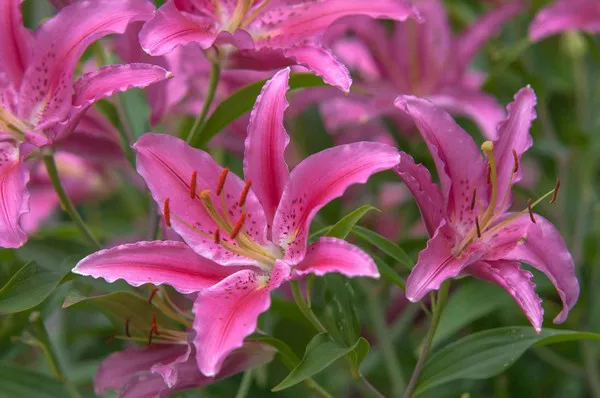Lily flowers are renowned for their stunning blooms and elegant presence in gardens. With their vibrant colors and captivating fragrances, lilies can add a touch of grace and sophistication to any outdoor space. If you’re looking to cultivate these magnificent flowers in your garden, this comprehensive guide will provide you with the necessary information to help you successfully grow lilies and enjoy their beauty year after year.
1. Choosing the Right Lily Varieties
Selecting the appropriate lily varieties is crucial to ensure successful growth. There are different types of lilies available, including Asiatic, Oriental, Trumpet, and Easter lilies. Each type has unique characteristics, such as bloom size and color. Consider factors like climate, soil conditions, and personal preferences when choosing the right lily variety for your garden.
2. Selecting a Suitable Planting Location
Lilies thrive in locations that receive ample sunlight, preferably 6-8 hours per day. Find a spot in your garden that offers well-draining soil to prevent waterlogged roots. It’s best to avoid areas with strong winds, as they can damage tall lily stems. Additionally, ensure there is enough space between lilies and other plants to allow proper airflow.
3. Preparing the Soil
Lilies prefer slightly acidic to neutral pH soil (around 6.0-7.0). Before planting, amend the soil with organic matter such as compost or well-rotted manure to improve drainage and provide essential nutrients. Remove any weeds or debris from the planting area to reduce competition for resources.
4. Planting Lily Bulbs
Plant lily bulbs in the early spring or fall, considering the specific recommendations for the chosen lily variety. Dig a hole deep enough to accommodate the bulb’s size. Generally, the rule of thumb is to plant bulbs at a depth three times their diameter. Place the bulb with the pointed end facing upward and cover it with soil, gently firming it around the base.
5. Watering and Mulching
Lilies require regular watering to keep the soil moist but not waterlogged. Deeply water the plants once or twice a week, depending on weather conditions. Apply a layer of organic mulch, such as straw or shredded bark, around the lily plants to retain soil moisture and suppress weed growth. Mulching also helps regulate soil temperature.
6. Providing Adequate Nutrients
To promote healthy growth and abundant blooms, fertilize lilies regularly during the growing season. Incorporate a slow-release fertilizer into the soil before planting bulbs. Additionally, feed established lilies with a balanced fertilizer every 4-6 weeks from early spring until late summer. Follow the dosage instructions provided by the manufacturer to avoid over-fertilization.
7. Staking and Supporting Lily Stems
Some lily varieties, especially Oriental and Trumpet lilies, have tall stems that may require staking or support to prevent damage from wind or heavy rain. Install stakes or use plant supports when the lilies are about 1-2 feet tall. Secure the stems loosely to the stake using soft ties or twine, ensuring not to constrict their growth.
8. Deadheading and Pruning Lilies
Remove spent flowers (deadhead) regularly to redirect the plant’s energy toward producing new blooms. This process also helps prevent the formation of seed pods, encouraging the lily to focus on vegetative growth. Once the foliage starts turning yellow in late summer or fall, trim it back to ground level while being careful not to cut into the bulb.
9. Pest and Disease Management
Lilies can be susceptible to certain pests and diseases, including aphids, lily beetles, and fungal infections like botrytis blight. Regularly inspect your plants for signs of damage or infestation and take appropriate measures, such as using insecticidal soap or biological controls, to manage pests. Proper spacing, good airflow, and avoiding overhead watering can help prevent fungal diseases.
10. Winter Care
In regions with cold winters, it is essential to protect lily bulbs from freezing temperatures. Apply a layer of mulch or straw around the base of the plants in late fall to insulate the bulbs. This protective layer will help maintain stable soil temperatures and safeguard the bulbs during winter dormancy.
Conclusion
Growing lilies can be a rewarding experience, providing you with vibrant blooms and a touch of elegance in your garden. By selecting suitable varieties, providing optimal growing conditions, practicing regular maintenance, and addressing pest and disease issues promptly, you can ensure healthy lilies that grace your garden year after year. With the knowledge gained from this comprehensive guide, you are well-equipped to embark on your journey to grow beautiful lily flowers successfully. Happy gardening!


